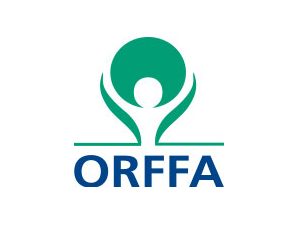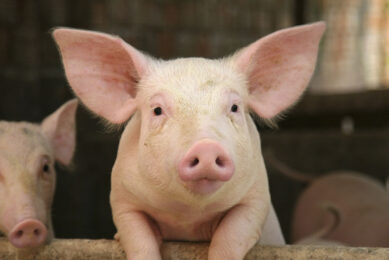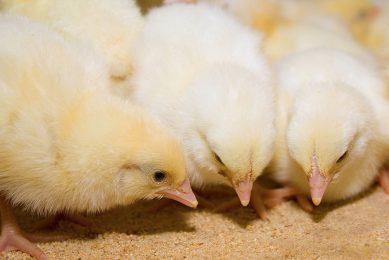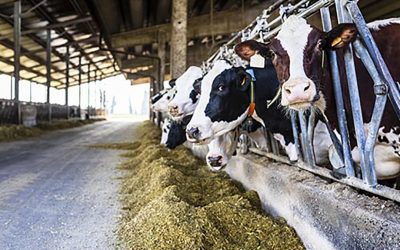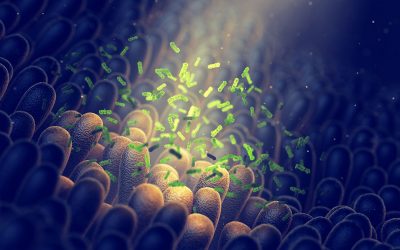Effect of betaine on ruminant performance
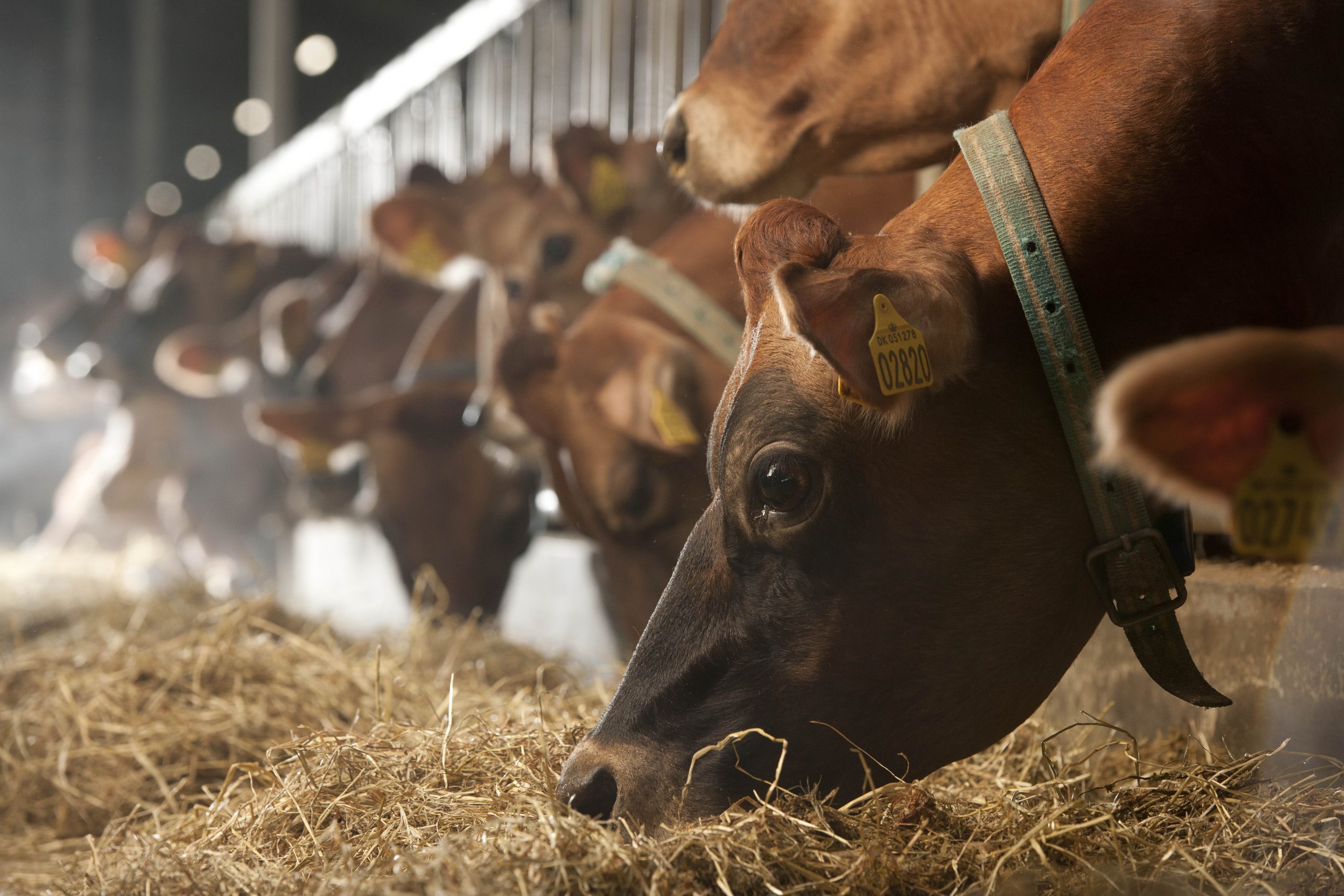
Betaine has 2 main functions. The first is as a methyl donor (via S-adenosyl-methionine (SAM)), thereby sparing methionine, decreasing homocysteine concentrations and increasing the available substrates for protein synthesis. Second, when not catabolised, betaine serves as an organic osmoprotectant, accumulating within osmotically stressed cells.
After reviewing the positive effects of betaine in laying hens and pigs, this review describes the effects of betaine supplementation on ruminant performance.
Functions of betaine in ruminants
Besides being a methyl donor, betaine acts as an osmolyte. Betaine, as zwitterion (dipolar ion), has a net neutral charge, but has a region of positive and negative charges. This allows betaine to hold water molecules (intracellular) against a concentration gradient (Hall et al., 2016). Studies with bacteria during high osmolarities, show that betaine restores protein denaturation, saving enzymes, and stabilises and assists in thermoprotection.
Additional functions of betaine are functioning as molecular chaperone, decreasing susceptibility of microbial populations to stress, being an antimicrobial agent to some bacteria, such as Salmonella typhimurium and betaine can be used as a nutrient.
Positive influence on fermentation
In ruminants, betaine also has a positive influence on fermentation, it increases total volatile fatty acid (VFA) production and increases the ratio of acetate to propionate (A:P). Betaine serves as a source of ruminal available nitrogen, increasing microbial fermentation rate and altering fermentation patterns.
Many authors describe how betaine is converted to acetate in the rumen, which can be used for milk fat synthesis. An in vitro trial with rumen fluid showed a betaine degradation of 6% after 12h of incubation and 15% after 24h of incubation, suggesting betaine partially survives the rumen. Betaine is highly water-soluble, dissolving immediately in the rumen fluid after ingestion and it was shown that more than 80% reaches the duodenum within 12h. This explains positive results on ruminant performance, similar to what is already seen in poultry and pigs (see previous review articles).
Cost of heat stress
Research to the effects of climate change on milk production have estimated that the negative effects of heat stress to milk production result in a cost of up to US$2 billion per year in the US or over €400 per cow/year.
Heat stress is mostly expressed by the term Temperature Humidity Index (THI). The principle behind the THI is that when it increases, with higher environmental temperature and/or relative humidity, cattle will experience more difficulty to cool themselves, decreasing body comfort. For dairy cattle, a THI > 72 is considered as mild heat stress. A THI > 78 is seen as moderate heat stress with markedly reduced milk production and other physiological effects.
Cows with (very) high milk yields, suffer more from heat stress than low producing dairy cows, therefore THI threshold for cows producing more than 35 kg milk/d is revised from 72 to 68. This indicates that depending on Relative Humidity, onset of heat stress in high producing dairy cows occurs at temperatures between 21˚C (RH of 75%) to 24˚C (RH of 25%).
Heat stress can be measured by respiration rates, with increasing heat stress, respiration rate also increases from low (20-60 breaths/min) to high (80-120 breaths/min) or even severe (>150 breaths/min).
To alleviate the heat stress burden, the hypothalamus reduces secretion of appetite and energy metabolism hormones T3 and T4, this causes a decrease in dry matter intake (DMI). The hypothalamus also decreases progesterone and prolactin secretion, reducing milk secretion and decreasing milk production. Next to reduced milk production (due to reduced feed intake and to post-absorptive glucose and lipid homeostasis, heat stress also changes the milk quality, by reducing milk lactose and protein levels (Zhang et al., 2014). Heat stress has a negative effect on the formation of endogenous free radicals, causing a reduction in antioxidant capacity of animals. During heat stress, negative energy balance (NEB) is prolonged, liver activity declines and peripheral fat mobilisation increases, causing lower plasma cholesterol and triglyceride levels.
Effects of heat stress on production
Milk production can decrease between 10-15% and up to 50% during extreme heat events. A trial with dairy cattle for 1 week in thermal neutral zone and 2 weeks thereafter in heat stress conditions showed decreasing milk yields from 32 to 27 and 23 kg/d during wk 1 and 2 of heat stress (P<0,001;>Figure 1). Dry matter intake (DMI) was decreased from 25.5 kg/d to 20.2 and 18.8 kg/d during wk 1 and 2 of heat stress (P<0,001). milk fat and protein% and -yields were decreased after 2 weeks of heat stress. the heat stress increased both rectal temperature and respiration rate (p><0,001).>
A review towards climate conditions and dairy productivity reveals a summary of heat stress impact studies in various regions including USA, Argentina, Australia, New Zealand, the Netherlands, Israel and Sudan. Conclusions from this review are annual milk yield losses of between 31.4 and 168 kg. In a series of trials, University of Arizona investigated the correlation between milk yield losses and THI increase. Results indicated that for each increase of THI by 5 points, milk yield was reduced by approximately 0.65 kg/day (Figure 2).
Effects of heat stress on fertility
Direct impacts of heat stress on fertility are caused by impairing cellular function of reproductive cells. Indirectly fertility problems are increased through heat stress because of a reduced feed intake, increasing serum triglyceride, non-esterified fatty acids (NEFA) and β-hydroxybutyrate (BHBA) concentrations, indicating higher body fat mobilisation and a higher and prolonged NEB during lactation. Heat stress impairs follicular development and corpus luteum function. Conception rates decrease to 10-15% at days of with Temperature Indexes of83 or higher. Prolonged NEB causes impaired calving-to-conception interval, less frequent LH pulses, longer follicular waves with development of smaller dominant follicles.
Summarised, heat stressed cows have a higher number of inseminations and lower conception rate. Maternal heat stress during late gestation can result in impaired foetal growth and immune function of the neonate. Different measures can be taken to unburden animals from heat stress, nutritional wise, betaine is one of these measures.
Betaine as methyl donor
The effect of betaine as methyl donor is described extensively in previous review articles. Ruminant research shows beneficial effects of betaine as methyl donor as well. A goat trial showed higher milk free creatine, carnitine and methionine in goats fed betaine in their diet. A dairy cattle trial showed no difference in plasma NEFA, serum VLDL and triglycerides between methionine, choline and betaine supplemented diets. Another study confirmed these results and showed reduced plasma NEFA with 15% and BHBA with 2.3% after 150 g betaine/cow/d supplementation.
Betaine improves ruminant performance
Different studies show that supplementing betaine to lactating dairy cows can increase milk yield between 5-12%. Inclusion rates of 15-100 g/d were used in the different studies and the highest increase was seen with 100 g/d of betaine, see Table 1.
Increasing milk fat (3.27 to 3.43%; Wang et al., 2010), milk lactose and milk protein (5.01 to 5.16 and 2.99 to 3.12% resp.; Zhang et al., 2014; Hall et al., 2016) were also absorbed. Also in dairy goats, there is seen a positive effect of betaine on milk performance and composition. Betaine supplementation of 4g/kg resulted in an increased milk yield from 1.47 to 2.0 kg/d in the 4th month of lactation. Milk fat% (from 4.4 to 4.69% in 5th month of lactation) and SCFA concentration were also increased with betaine inclusion.
Betaine improves ADF and NDF digestibility by improving rumen fibre degrading bacterial activity and total nutrient digestibility by increasing cell proliferation within gut tissues, increasing the surface availability to absorb nutrients and improving feed utilisation efficiency.
Betaine shows positive effects during heat stress. Rectal temperatures decrease with increasing doses of betaine in both dairy cattle and sheep. Also betaine improves the antioxidant status with increased plasma cortisol, glutathione peroxidase, superoxide dismutase and malondialdehyde levels when betaine is supplemented to dairy cattle diets.
Betaine has a positive effect on rumen health and fermentation, improving production and performance of dairy cattle and goats. Next to the positive effects on the rumen, there is evidence that betaine has a positive post-rumen influence, showing benefits during both heat stress and thermoneutral conditions on fertility, production and health of dairy cattle and -goats.


